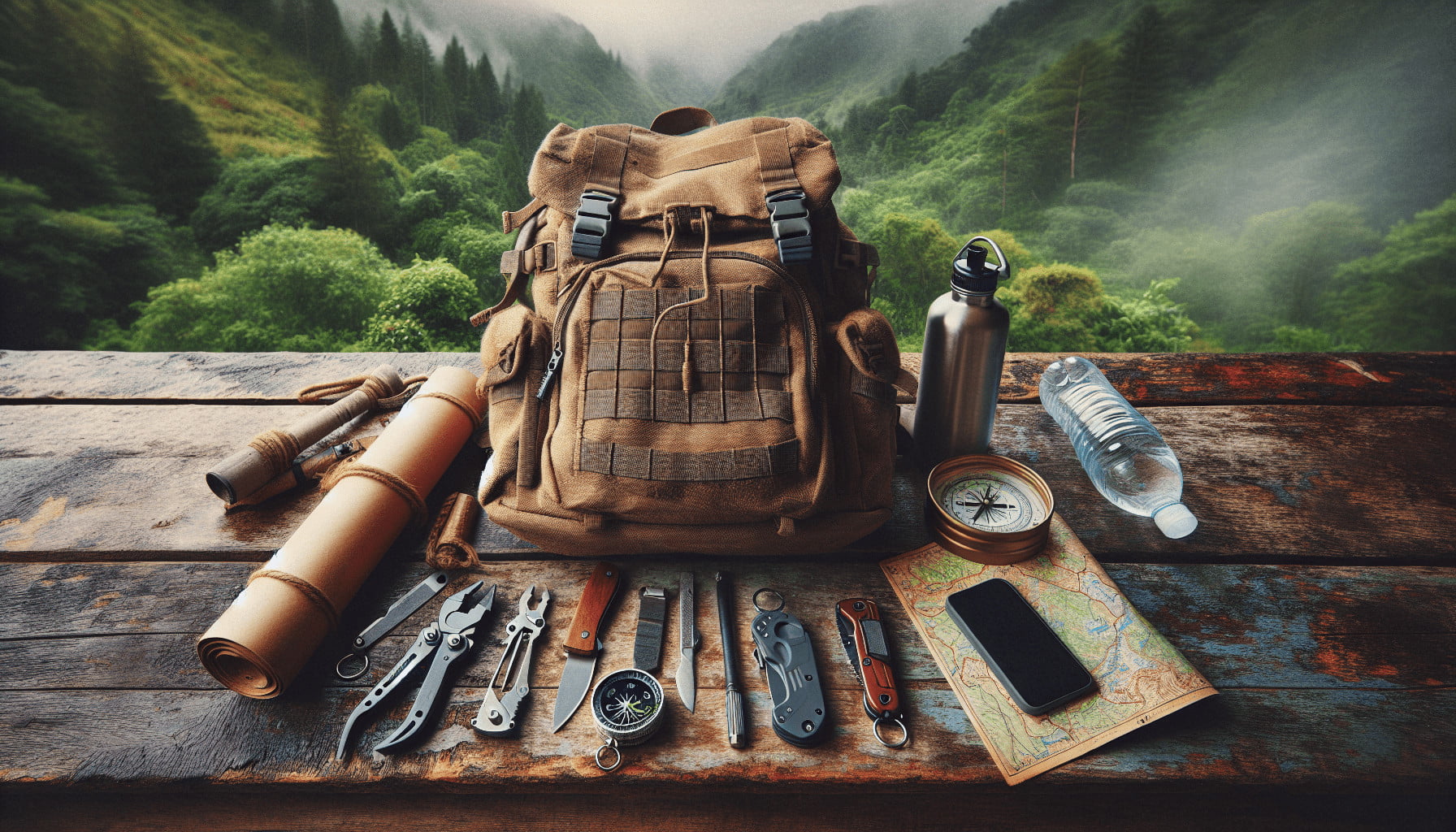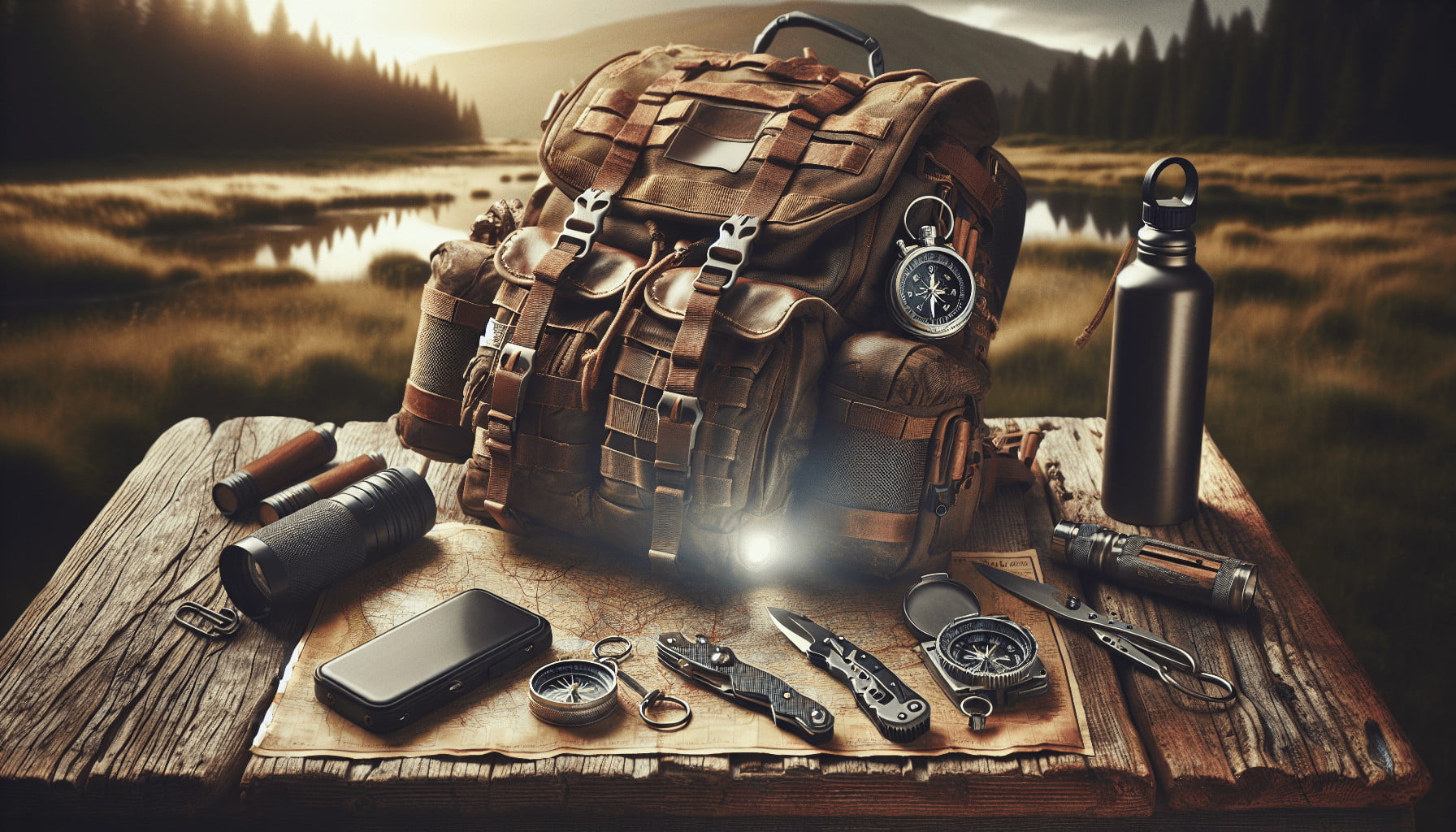Survival Tips For Long-Term Emergency Situations
Imagine finding yourself in a situation where the usual conveniences of daily life are suddenly unavailable, and you must rely on your wits and resources to get by. In such scenarios, having a robust set of long-term survival tips can mean the difference between merely scraping by and thriving. This guidance will cover everything from securing clean water and reliable food sources to creating a sustainable living environment. It will help you navigate the complexities and challenges of prolonged emergencies, equipping you with the skills and knowledge to maintain safety, health, and a sense of normalcy amidst the chaos. Have you ever thought about what you would do if an emergency situation lasted longer than a few days or weeks? Unfortunately, many of us don’t prepare for long-term emergencies, such as natural disasters, social unrest, or prolonged power outages. But don’t worry, we’re here to guide you through it all. This article will equip you with critical survival tips for long-term emergency situations, helping you remain self-sufficient and safe when the unexpected happens.
Understanding the Importance of Preparedness
When it comes to long-term emergencies, the mindset shift from short-term to long-term survival is crucial. While you might be able to wing it for a few days, surviving for weeks or months requires planning, resources, and a whole lot of know-how.
Why Long-Term Emergency Situations Are Different
Think about it. If you’re only preparing for a few days, a couple of bottles of water, some canned food, and a flashlight might be enough. But what happens when those few days turn into a few weeks? Suddenly, you need a sustainable source of food, water, and energy. Plus, you’ll need to protect yourself from potential threats and address health concerns. So, what should you focus on first?
Securing a Reliable Source of Water
Water is life. Without it, you’d be in serious trouble long before your food supplies run out. So, how can you ensure a steady supply?
Water Storage
Storing enough water is your first line of defense. For long-term emergencies, aim for at least one gallon per person per day. But remember, water isn’t just for drinking—you’ll need it for cooking, cleaning, and personal hygiene.
| Number of People | Days of Emergency | Gallons Needed |
|---|---|---|
| 1 | 30 | 30 |
| 2 | 30 | 60 |
| 4 | 30 | 120 |
Water Filtration and Purification
Stored water can run out, so knowing how to filter and purify water is essential. Handheld water filters, purification tablets, and boiling are good methods to consider. Investing in a quality water filter can be a game-changer.
Harvesting Rainwater
Another option is harvesting rainwater. This can be a lifesaver, especially if you’re in an area that receives regular rainfall. Just make sure you have a food-grade rainwater collection system and proper filters to ensure the water is safe to drink.

Stocking Up on Food
Next up, let’s talk about food. While it’s tempting to just load up on canned goods, a more thought-out approach will serve you better in the long run.
Non-Perishable Foods
Focus on non-perishable foods like rice, beans, pasta, and grains. These items have a long shelf life and can provide you with essential nutrients.
Freeze-Dried and Dehydrated Foods
Freeze-dried and dehydrated foods are also worth considering. They’re lightweight, have a long shelf life, and can be rehydrated easily.
Home-Grown Food
For those who have the space, growing your own food can be a lifesaver. Not only does it provide a renewable food source, but it also gives you a sense of control in uncertain times. Plant vegetables like tomatoes, peppers, and herbs, which are relatively easy to grow.
Preserving Food
Learning to preserve food through canning, pickling, or drying can extend the life of your garden harvest. This is a skill worth mastering.
Ensuring Shelter and Warmth
Having a secure and warm shelter is non-negotiable. Whether you stay put or have to move, you’ll need to consider your sheltering options carefully.
Staying at Home
If your home is safe to stay in, it’s your best option. Make sure you have materials to board up windows, alternate heating sources, and plenty of blankets to keep warm.
Mobile Shelters
Sometimes, leaving your home may be necessary. In these cases, having a tent, tarps, or even a car can serve as mobile shelters. The key is to stay dry and warm.
Heating Without Power
If the power goes out, you’ll need an alternative heating source. Wood-burning stoves, portable heaters, and plenty of firewood can help keep you warm. Make sure you have proper ventilation to avoid carbon monoxide poisoning.

Maintaining Personal Hygiene
Sanitation and personal hygiene can quickly become challenging during a long-term emergency. But they’re crucial for preventing illness.
Stock Up on Hygiene Supplies
Make sure you have enough soap, toothpaste, shampoo, and feminine hygiene products to last for several months. Baby wipes and hand sanitizer are also invaluable if water is limited.
DIY Hygiene Solutions
In a pinch, you can make your own cleaning solutions. For instance, vinegar and baking soda can be used for cleaning surfaces, and saltwater can serve as a mouth rinse.
Waste Management
Don’t forget about waste management. If toilets aren’t working, having a portable toilet or digging a latrine might be necessary. Keep plenty of trash bags on hand to manage waste effectively.
First Aid and Medical Care
Healthcare becomes a priority in long-term emergencies. Be prepared to handle common injuries and illnesses when doctors or hospitals aren’t readily available.
Stocking a First-Aid Kit
Your first-aid kit should be more comprehensive for long-term emergencies. Include things like antiseptics, bandages, painkillers, and any prescription medications you or your family may need.
| Item | Quantity | Purpose |
|---|---|---|
| Bandages | 20 | Wound care |
| Antiseptic wipes | 30 | Cleaning cuts/scrapes |
| Painkillers | 100 | Pain relief |
| Prescription meds | 1-month supply | Essential medications |
| Tweezers | 1 | Removing splinters/insects |
Natural Remedies
Knowledge of natural remedies can be a lifesaver. For example, honey can serve as an antiseptic for wounds, and ginger can help with nausea and inflammation.
Preventative Measures
Maintaining good hygiene and a balanced diet can prevent many common illnesses. Regular exercise and mental health practices also contribute to overall wellbeing.
Communication and Staying Informed
Staying informed can make a world of difference in long-term emergencies. Without the right information, you could be left in the dark—literally and figuratively.
Communication Tools
Equip yourself with a battery-operated or hand-crank radio to stay updated with emergency broadcasts. Also, walkie-talkies can be useful for communicating with family members or neighbors.
Backup Power
Solar chargers or portable battery packs can keep your essential devices running. Keep these charged and ready to go.
Community Networks
Your community can be one of your greatest assets. Establish communication networks with your neighbors to share information, resources, and support.
Self-Defense and Security
Unfortunately, desperate times can bring out the worst in people. Knowing how to protect yourself and your family is crucial.
Home Security
Strengthen your home’s defenses with locks, reinforced doors, and possibly even a security system. Also, have a plan for how to respond to intruders.
Personal Safety Training
Self-defense training can provide the skills and confidence needed to protect yourself. Tools like pepper spray or even firearms (if you’re trained and legally permitted) can offer additional security.
Building a Community
There’s strength in numbers. Establishing a community with your neighbors can improve security. Watch out for each other, and share resources when possible.
Mental and Emotional Wellbeing
Don’t underestimate the psychological toll a long-term emergency can take. Staying mentally and emotionally strong is just as important as physical preparedness.
Staying Connected
Even in isolation, try to keep in touch with loved ones through letters, social media, or radio. Human connection can provide much-needed emotional support.
Staying Active
Regular physical activity can improve your mood and reduce stress. Whether it’s a quick jog or some stretching exercises, keep your body moving.
Hobbies and Entertainment
Maintaining hobbies or engaging in new activities can provide a mental escape. Whether it’s reading, knitting, or playing a musical instrument, these activities can uplift your spirit.
Mindfulness and Meditation
Practicing mindfulness or meditation techniques can help you stay grounded. Simple breathing exercises or guided meditation apps can be incredibly helpful.
Financial Preparedness
As the saying goes, “Expect the best, prepare for the worst.” Financially preparing for long-term emergencies is a smart move.
Emergency Funds
Aim to save at least three to six months’ worth of expenses in an easily accessible account. This fund can help manage unexpected costs.
Diversifying Assets
Consider having some of your savings in tangible assets like gold and silver, which can be valuable if traditional currency loses its worth.
Reducing Debt
If possible, reduce outstanding debts. The fewer financial obligations you have, the better prepared you’ll be to manage the long-term crisis.
Practical Skills Worth Learning
Knowing how to handle emergencies beyond the basics can set you apart in terms of preparedness.
Basic Carpentry and Repairs
Understanding how to make basic repairs around your home can go a long way. Fixing a leaky roof or broken window can be crucial during a long-term emergency.
Gardening and Food Preservation
Growing your own food and preserving what you harvest ensures a renewable food source. These skills are invaluable in sustained survival scenarios.
Cooking Without Electricity
Practice cooking methods that don’t require electricity. Dutch ovens, camping stoves, and even solar cookers can come in handy.
First Aid Training
Beyond a stocked first-aid kit, knowing how to use its contents effectively can save lives. Consider taking a comprehensive first-aid and CPR course.
Final Thoughts
Preparing for a long-term emergency isn’t just about having enough supplies; it’s about having the right mindset, skills, and plan to navigate the unknown. Whether it’s securing your home, ensuring you have a reliable water source, or knowing how to stay mentally fit, every step you take now increases your chances of weathering the storm.
So why not start today? Take stock of your current preparedness level and identify areas for improvement. Remember, it’s not just about surviving—it’s about thriving during uncertainty. You’ve got this!
By following these survival tips for long-term emergency situations, you’ll be well on your way to ensuring the safety and wellbeing of you and your loved ones. Stay prepared, stay informed, and stay strong.
